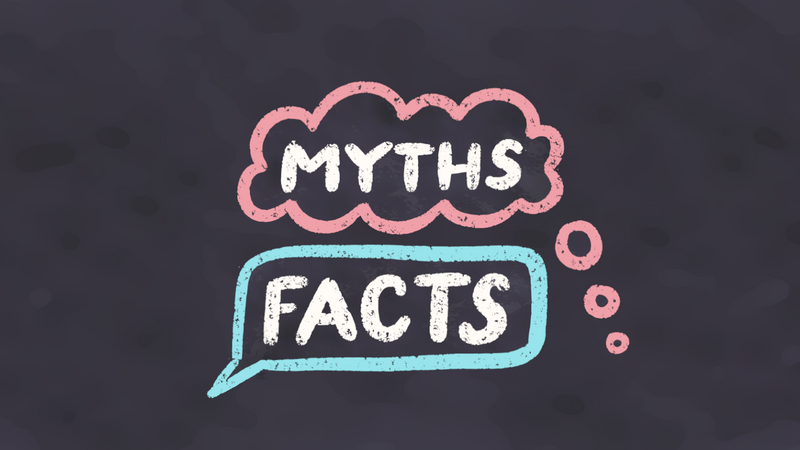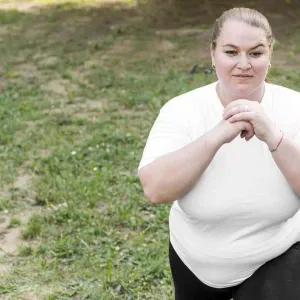

Our Review Process
Our articles undergo extensive medical review by board-certified practitioners to confirm that all factual inferences with respect to medical conditions, symptoms, treatments, and protocols are legitimate, canonical, and adhere to current guidelines and the latest discoveries. Read more.
Our Editorial Team
Shifa Fatima, MSc.
Author
Dr. Apoorva T, MHM.
MEDICAL ADVISOR
6 myths and facts about body fat
There’s a lot of misinformation out there about fats and fat loss which can cloud your understanding of how to maintain a healthy body fat percentage. So let’s take a second to clear the air.
Myth : Fat can convert to Muscle and vice versa
Fact : Fat and muscle are different kinds of body tissues — one cannot turn into the other. When you exercise with a caloric deficit, the extra fat that is stored in the body is used for energy. You burn fat and build muscle. When you stop exercising, muscle doesn’t turn into fat, instead, it starts to atrophy and also slows down your metabolism.
Myth : You can reduce Fat from a specific part of the body
Fact : The idea of spot reduction is one of the biggest weight loss myths out there. Whether you’re looking at excess fat around the belly or the arms, it is not possible to reduce the fat in one specific area. You need to work on overall fitness levels and fat loss to achieve that.
Myth : Doing only Cardio will help you lose Fat
Fact : Cardio definitely helps burn calories, but only while you’re exercising. Resistance and weight training on the other hand cause wear and tear in your muscles which your body will need to expend calories to repair. That means it burns calories even after your workout. An ideal combination of both will aid in fat loss and avoid loss of lean muscle mass. Resistance training is also better at burning through stored fat. Although a 20-30 minute cardio session will make you sweat, doing a more intensive or longer resistance training will use fat as the energy source rather than the glycogen storage.
Myth : Crash Diets Help
Fact : To lose weight or fat sustainably, you have to create habits, Sustainable weight loss or fat loss requires creating habits — nutrition, workout, or lifestyle. While crash diets where you consume very low caloric meals may show quick results in the short term, they can in fact result in weight gain and muscle loss in the long term. Furthermore, fasting and diets are only safe when done under professional guidance.
Myth : Very Low Body Fat % is Good
Fact : A body fat percentage significantly below the recommended range can be fatal. Once the range reaches the essential fat level or lower, it could hamper the body’s physiological functions. It also depends on gender, age, exercise levels, and genetics. Some athletes, such as professional bodybuilders, may be recommended to have a low body fat percentage, but this is only for a very short time, usually for competitions.
Myth : Avoiding foods with Fats for effective Fat Loss
Fact : Foods rich in fat are not necessarily evil. In fact, fats(good fats) are essential nutrients and should be part of a healthy nutrition plan. But because fats contain more calories per gram as compared to protein or carbohydrates, you need to keep an eye on how much you are consuming.
Table of Contents
Why do we need Body Fat?
We need body fat due to the following reasons -
- Body fat is the primary storage for energy. Our body stores energy in the form of fats and uses them whenever needed. This energy is also used by the body when we are sick.
- It acts as a physical cushion and protects the internal organs against any trauma. It surrounds and protects the vital organs and also provides cushioning to the joints. It also keeps the organs stable inside the body.
- Body fats help in regulating the temperature of the body protecting us from the extreme heat and cold.
- Body fat around the waist protects the women against the side effects of menopause.
- It plays a major role in the functioning of the immune system. It helps in the communication of the metabolic state of the body and the immune system.
- It helps in transporting fat-soluble vitamins like vitamins A, D, E, and K.
- It is essential in keeping the skin, hair and nails healthy.
Bottom Line
Reducing your overall caloric intake is often one of the best weight- and fat-loss strategies. However, eliminating the wrong foods from your diet can hinder you from reaching weight-management and body-composition goals. Learning to recognize common myths is a good way to determine which diet and exercise regimen is right for you.
FAQs
1. How much fat do we need?
According to the Dietary Reference Intake (DRI), the fat percentage in an adult should be 20 to 35 percent of the total calories. Suppose a person intakes 2000 calories in a day, then the amount of fat is 44 grams to 77 grams. However, the amount of fat differs from person to person depending on their activity level and overall health.
2. What are the causes of Obesity?
There are different myths about obesity, one of them would be that it is caused simply due to unhealthy eating habits and a bad lifestyle. An increased intake of calories, poor diet control, lack of physical activity, genetic factors, medical reasons, etc could contribute to it.
3. Is obesity genetic?
Yes, one of the major facts about obesity is that it can be genetic. Certain rare genetic conditions like Prader-Willi syndrome can lead to obesity. At times, the recessive (or dominant) gene for weight gain and fat can also be transmitted to the offspring via DNA. However, even if there are strong genetic links to gaining weight, one can always put in the extra effort and manage to keep them under the optimal level to be able to live a healthy life.
References
- https://www.hsph.harvard.edu/nutritionsource/healthy-weight/measuring-fat/
Disclaimer
This website's content is provided only for educational reasons and is not meant to be a replacement for professional medical advice. Due to individual differences, the reader should contact their physician to decide whether the material is applicable to their case.







